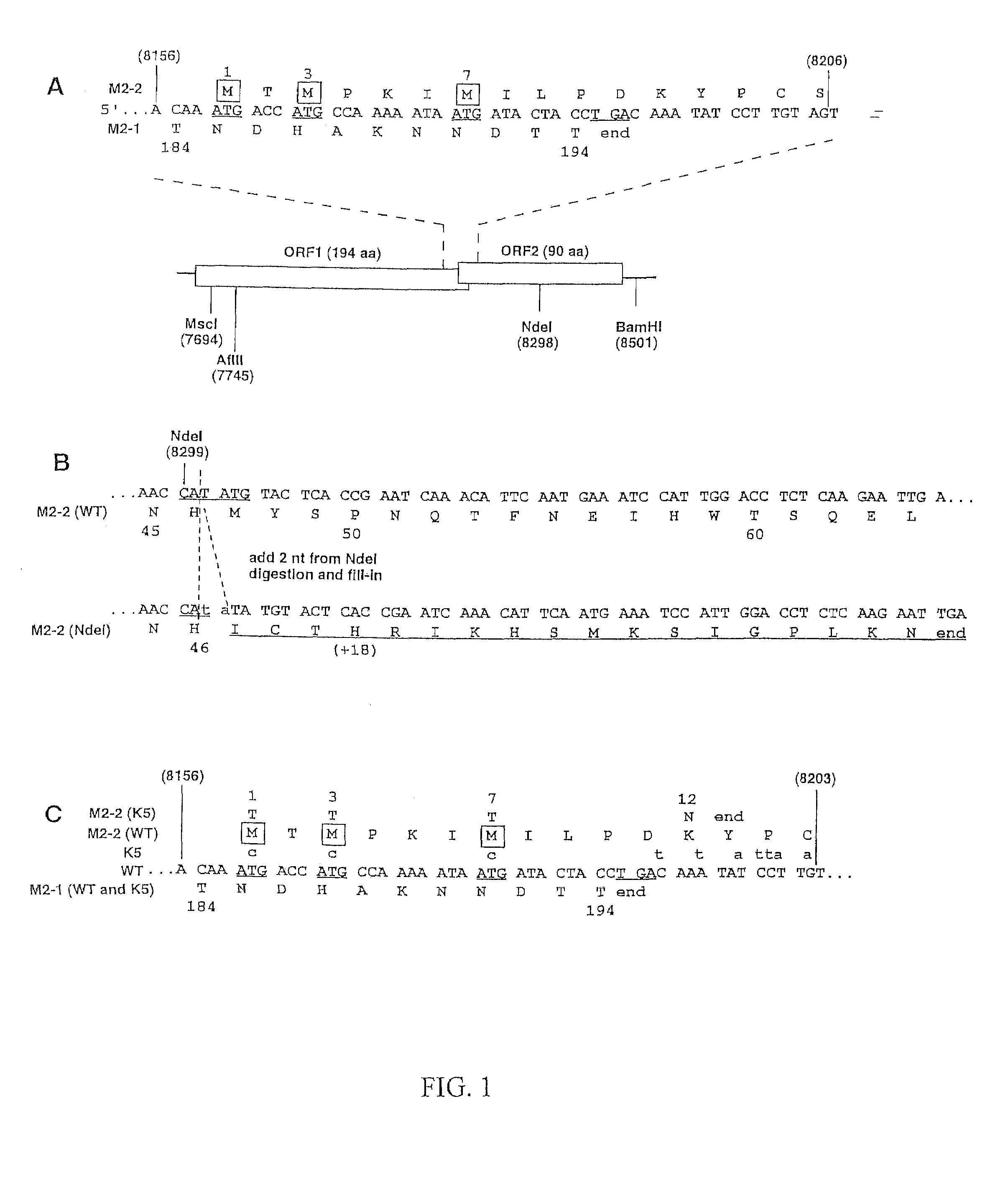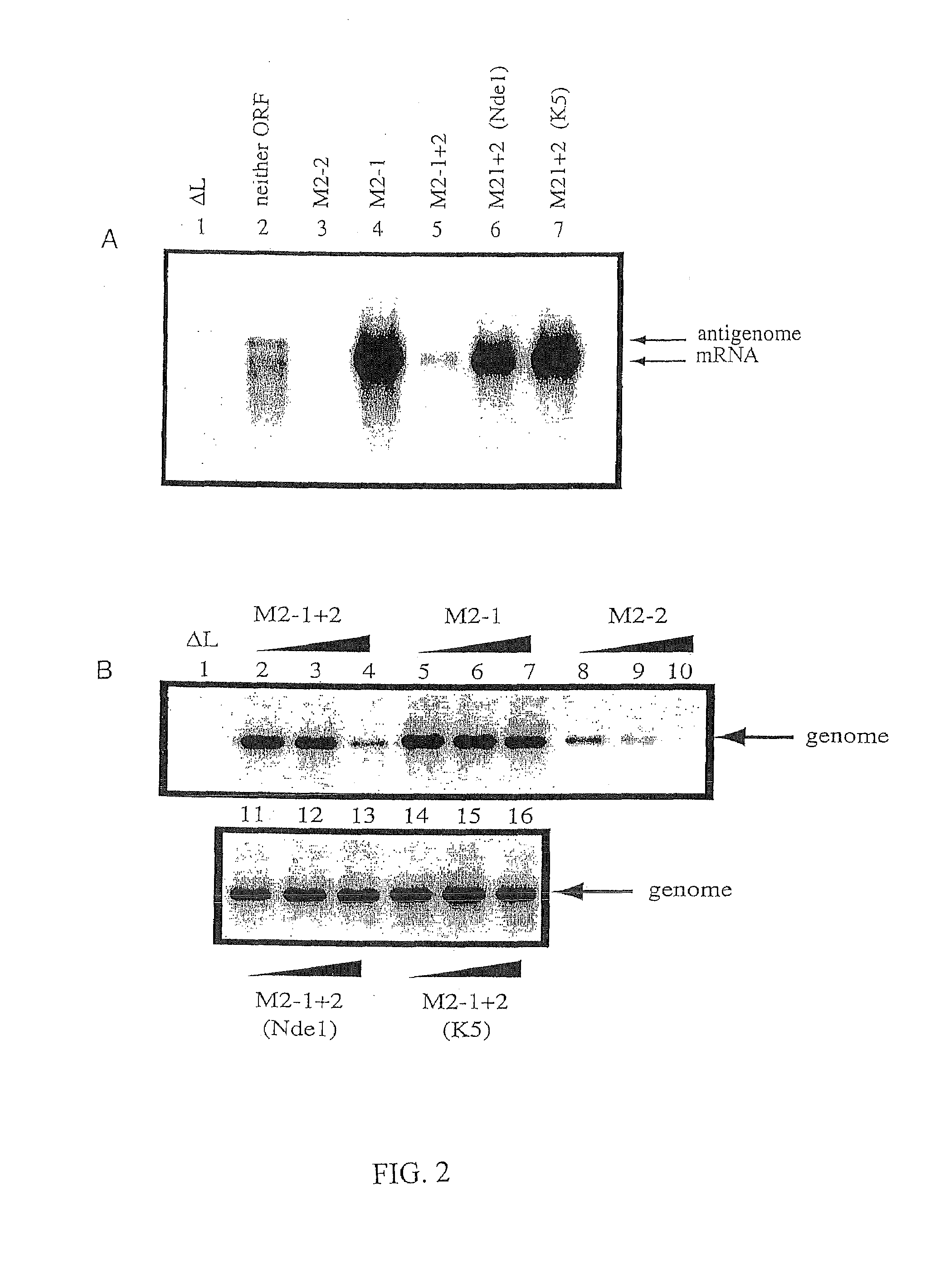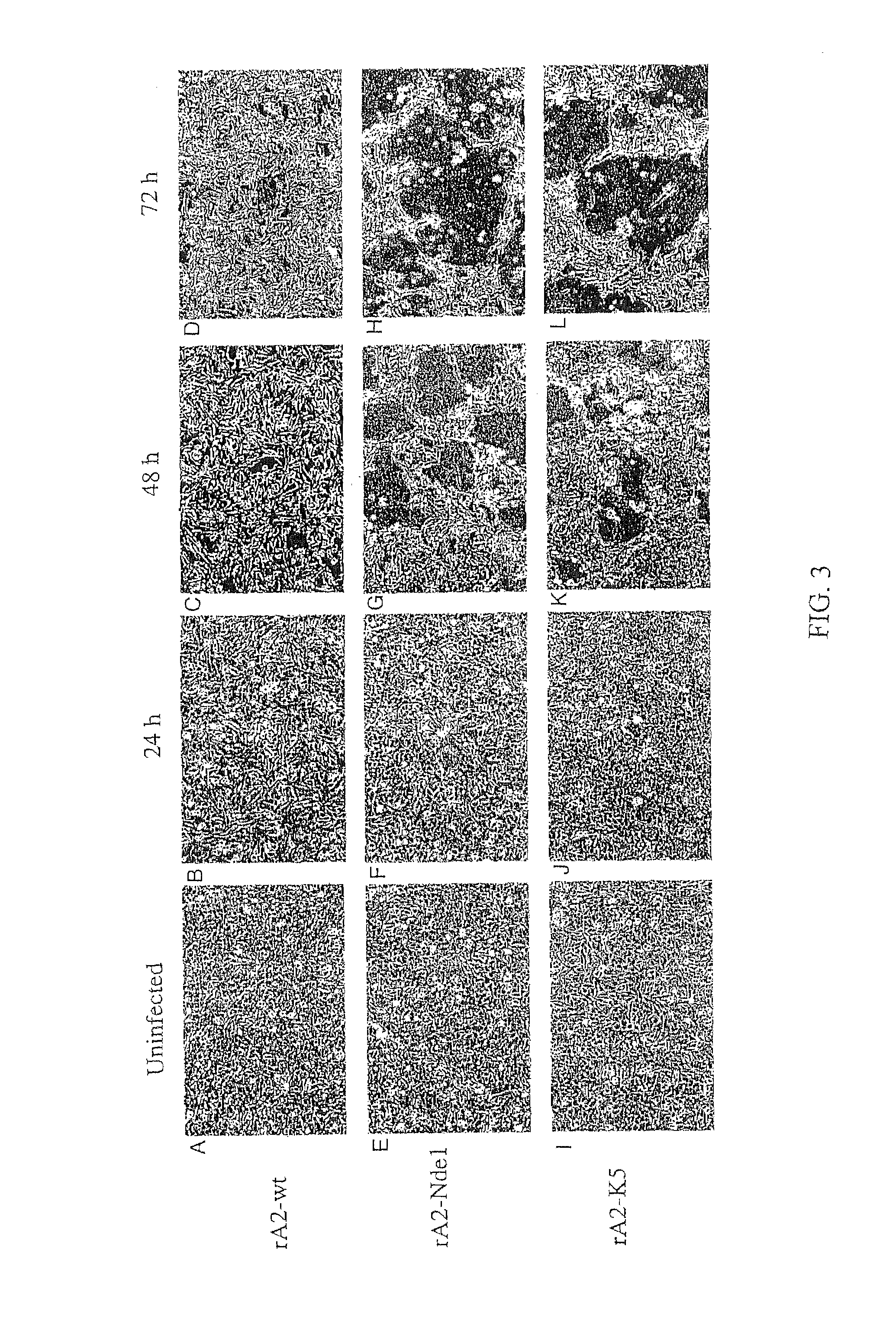Production of attenuated respiratory syncytial virus vaccines involving modification of M2 ORF2
a technology of attenuated respiratory syndrome and vaccine, which is applied in the direction of recombinant dna-technology, antibody medical ingredients, peptide sources, etc., can solve the problems of inability to transmit blood-borne viruses, inconvenient use, and inability to achieve widespread use, so as to improve the efficiency of transcription and replication, and improve the effect of biological properties
- Summary
- Abstract
- Description
- Claims
- Application Information
AI Technical Summary
Benefits of technology
Problems solved by technology
Method used
Image
Examples
example i
M2-2 Mutant Plasmid Constructions
[0202]All recombinant RSV viruses and cDNA clones were based on RSV strain A2 of antigenic subgroup A. An 805 bp MscI-BamHI fragment (nt 7696-8501 in the complete recombinant antigenomic sequence) containing most of M2 ORF1 and all of ORF2 was subcloned and subjected to mutagenesis. A unique NdeI site in ORF2 was opened, filled-in, and relegated, creating a frame-shift mutation hereafter called the NdeI mutation (FIG. 1B). The NdeI restriction enzyme site within ORF2 was identified at genome position 8299, and the frame-shift mutation (2 nts added) was at codon 47 of the predicted 90 amino acid protein (FIG. 1B). Thus the NdeI mutant encoded the N-terminal 46 amino acids of M2-2 fused to the 18 heterologous amino acids encoded by the frame-shift.
[0203]To create a second M2-2 knock-out mutant, hereafter called the K5 mutant (rA2-K5, also referred to as rA2ΔM2-2), PCR mutagenesis (Byrappa et al., Genome Research 5:404-407, 1995, incorporated herein by ...
example ii
Effects of M2-2 Knock-Out Mutations on Minireplicon Transcription and Replication
[0207]The function(s) of the M2-2 protein was not known, but it had previously been shown to strongly inhibit minigenome RNA synthesis (Collins et al., Proc. Nat. Acad. Sci. USA 93:81-5, 1996; Grosfeld et al., J. Virol. 69:5677-86, 1995 Hardy et al., J. Virol. 72:520-6, 1998, each incorporated herein by reference). Therefore this highly sensitive assay was used to verify that the NdeI and K5 mutations ablated this inhibitory effect. RSV transcription and replication were studied using a negative-sense RSV-CAT minigenome C2, which contains the CAT ORF under the control of RSV GS and GE signals flanked by the 3′-leader and 5′-trailer regions of the RSV genome (Collins et al., Proc. Nat. Acad. Sci. USA 93:81-5, 1996; Grosfeld et al., J. Virol. 69:5677-86, 1995). Intracellular synthesis of the C2 minigenome was driven from the transfected plasmid by T7 RNA polymerase supplied from the recombinant vaccinia v...
example iii
Recovery and Growth In Vitro of M2 ORF 2 Mutant RSV
[0210]The NdeI and K5 mutations were individually incorporated into a full length antigenomic cDNA and recovery of infectious rRSV was performed as described previously (Collins et al., Proc. Natl. Acad. Sci. USA 92:11563-11567, 1995, incorporated herein by reference). Viruses containing either the NdeI or K5 mutations (rA2-NdeI and rA2-K5 respectively) were recovered successfully, and the presence of the mutations was confirmed by sequencing RT-PCR product generated from infected cell RNA. Thus, M2-2 is an accessory protein that is not required for RSV growth in cell culture.
[0211]The rA2-NdeI and rA2-K5 viruses displayed a large plaque phenotype and accelerated syncytium formation. Specifically, the plaques which formed after 3 days were large and syncytial and resembled those formed by the wt virus at day 6 post-infection (not shown). When cell monolayers were infected at an moi of 1 pfu per cell, syncytium formation was evident ...
PUM
| Property | Measurement | Unit |
|---|---|---|
| temperature | aaaaa | aaaaa |
| molar ratio | aaaaa | aaaaa |
| molar ratio | aaaaa | aaaaa |
Abstract
Description
Claims
Application Information
 Login to View More
Login to View More - R&D
- Intellectual Property
- Life Sciences
- Materials
- Tech Scout
- Unparalleled Data Quality
- Higher Quality Content
- 60% Fewer Hallucinations
Browse by: Latest US Patents, China's latest patents, Technical Efficacy Thesaurus, Application Domain, Technology Topic, Popular Technical Reports.
© 2025 PatSnap. All rights reserved.Legal|Privacy policy|Modern Slavery Act Transparency Statement|Sitemap|About US| Contact US: help@patsnap.com



